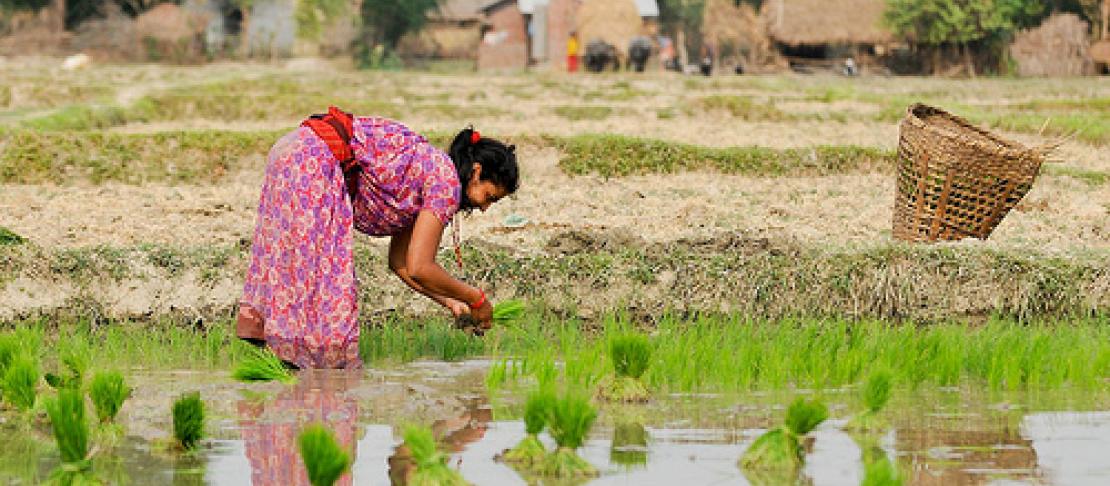Can climate change ever benefit tropical agriculture?

New hard-hitting analysis from the Asia Development Bank (ADB) leaves no doubt that climate change is the single biggest risk to food security in the continent where 60% of us live. At the sub-continental level, the picture is of course more complex. Recent science suggests there may even be spots of optimism for food production and farmers’ livelihoods in Asia, as reported in Multi-year variability or unidirectional trends? Mapping long-term precipitation and temperature changes in continental Southeast Asia using PRECIS regional climate model by Guillaume Lacombe, Chu Thai Hoanh and Vladimir Smakhtin, from the International Water Management Institute (IWMI).
Like many scientists before them, Lacombe and co-authors use the PRECIS model to bring global climate projections down to the regional scale for South-East Asia, in this case up to 2050 under SRES scenarios A2 and B2 (PDF). Their innovation is to apply a new statistical test to distinguish human-induced climatic trends from multi-decadal natural cycles. What they find is perhaps surprising: that precipitation will remain pretty much stable – in annual totals, seasonality and frequency and intensity of extreme rainfall events – over the vast majority of the region’s land areas.
The authors find that almost all significant human-induced changes in precipitation are anticipated to occur over the sea, not the land. The exception is increases in rainfall in central and northern Myanmar, which should benefit crop production, as this is the driest area in the region. Cambodia and southern Vietnam may experience small decreases in dry-season precipitation, with negligible consequences for agriculture. Increases in temperature, projected for the whole region in line with global patterns, may even increase crop yields – particularly in the mountains of Yunnan and the northern parts of Thailand, Laos and Myanmar, where short growing seasons currently limit agricultural production.
Despite these rays of hope, the authors’ results give no cause for complacency about climatic impacts on agriculture in South-East Asia. First, no models are perfect; for example the PRECIS regional model uses only one global General Circulation Model, which increases uncertainty. Second, climate change will have other impacts, importantly sea level rise, which could salinify 80% of the Mekong Delta, destroying rice production and displacing millions of people. Climate change impacts on pests and diseases remain critical unknowns. Third, farmers in the region will still need to contend with the huge seasonal variability in rainfall they have always experienced (PDF), including dry spells during the rice-growing period that can devastate yields, plus floods and landslides that are exacerbated by deforestation.
Lacombe and co-authors look beyond agriculture by ending their paper with the recommendation to focus future research on how climatic trends will interact with other major environmental changes associated with socio-economic and demographic transitions in the region. Key trends in Asia, identified as areas of concern in the ADB report, range from trade policy through to an ever-increasing and more youthful population. These may be challenges to climate change adaptation. On the other hand, trade and youth may be the source of solutions for a well-fed future.
Links
- Asian Development Bank, April 2012. Food Security and Poverty in Asia and the Pacific: Key Challenges and Policy Issues.
- Guillaume Lacombe, Chu Thai Hoanh and Vladimir Smakhtin. Multi-year variability or unidirectional trends? Mapping long-term precipitation and temperature changes in continental Southeast Asia using PRECIS regional climate model. Climatic Change 113: 285-299. DOI: 10.1007/s10584-011-0359-3 (Subscription required)
- IPCC Working Group III Special Report: Emission Scenarios. Summary for Policymakers (PDF)
- VIETNAM: Sea-level rise could "displace millions". IRIN Asia, 20 May 2011.
- Rod Lefroy, Laure Collet and Christian Grovermann. Potential Impacts of Climate Change on Land Use in the Lao PDR (PDF).
This is the July 2012 installation of AgClim Letters, a monthly e-bulletin on science and policy written by Sonja Vermeulen, Head of Research for CCAFS. Sign up to receive AgClim Letters bulletin and read past bulletins. Your comments are welcome below.

